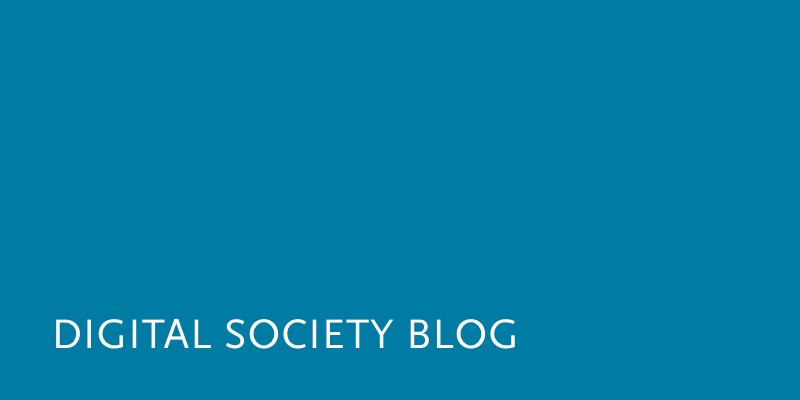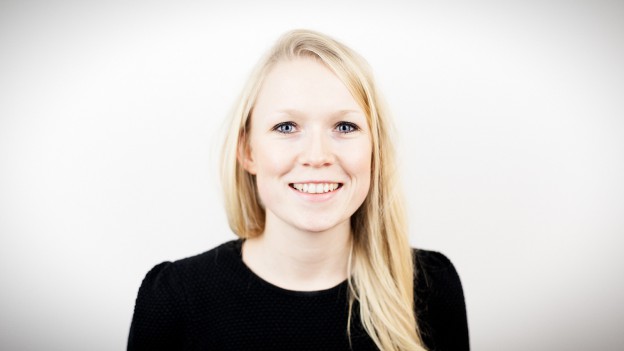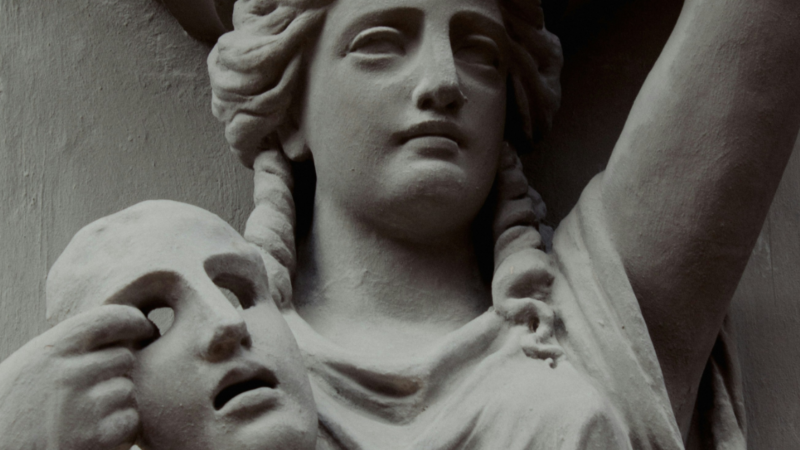Unsere vernetzte Welt verstehen

(Mindestens) sechs Perspektiven auf audiovisuelle Medien – Eindrücke aus dem Early Stage Researchers Colloquium 2014
Alte Filme in Archiven, Computerspiele und Multi-Channel-Networks: Audiovisuelle Medien beschäftigen uns täglich. Dabei werden Reihe von Fragen aufgeworfen, die von rechtlichen Rahmenbedingungen bis zu neuen Geschäftsmodellen reichen. Im Rahmen des diesjährigen Early Stage Researchers Colloquium „Pay Per Pixel“ beleuchteten Forscher in Impulsreferaten einige dieser komplexen Probleme und diskutierten sie mit Praktikern aus der Filmbranche.
Der Artikel ist auf Englisch erschienen.
(At least) six perspectives on audio-visual media – Impressions from the 2014 Early Stage Researchers Colloquium
From old films stored in archives across Europe to computer games and videos on multi-channel-networks: audio-visual media is all around us. This years’ ESRC „Pay Per Pixel“ track set out to shed light on all these different aspects of audio-visual works from a multidisciplinary perspective. Researchers with backgrounds in digital humanities, law, media and cultural science, communication studies, and media management came together with practitioners to discuss the current challenges for audio-visual media, the (legal) conditions that govern their use and innovative business models.
Who Owns Culture … and what can you do with it?
To kick off the workshop, Rebecca Kahn gave the participants food for thought with her presentation on digital cultural heritage on the web. What value do digital objects – readily replicable and accessible from anywhere in the world – hold compared to the original? The presentation explained the importance of digitization for the formation and articulation of our identities as well as the role that museums and archives play in this context. People who can easily visit the British Museum often associate mummies and sarcophagi more readily with this particular institution in London than with the country and culture of Egypt. Building on that, being now able to virtually wander through exhibitions that are put online can change and enrich the experience of looking at historical objects and arts. Online displays can, for example, reveal the exhibits – like the intricacies of paintings such as No Woman No Cry – in much more detail than the original in an (offline) museum could. This trend, Rebecca Kahn argued, thus has the potential to shake up our perceptions of ownership, national identity, and culture.
Looking at the strong push for the digitization of cultural heritage and projects such as Europeana, the question arises what “access“ to these cultural objects means. Users are now increasingly in the position where they can look at films and photographs online, but can they remix them, create mash-ups, or incorporate the material into a documentary? The second presentation of the day focused on the legal framework that governs creative uses of audio-visual works. The presentation analysed the difficulties that can come up for users looking for rightsholders of audio-visual works as well as the (German) exceptions and limitations to copyright such as free use or quotations and their limits for film works. Finally, it took a look at the European level and discussed current initiatives and calls for reform.
Lies van Roessel examined the fine line between innovation and imitation in the games industry with a case study that aims to understand how actors in this sector deal with the issue of copying (cloning). She explained how social norms have developed where copyright protection doesn’t cover the so-called mechanics (or rules) of games that developers sometimes would like to protect. A lively debate about the idea-expression dichotomy and the role of copyright followed, where games-specialized lawyer Claas Oehler pointed out that the scope of game protection could go beyond copyright. He indicated that it is not just copyright that protects games, but that database rights and the Act Against Unfair Competition also play a role. He advised that all relevant actors should broaden their focus to avoid overloading and possibly destroying the copyright system.
Startup experiences, and new business and distribution models
The second part of the workshop focused on new business models for audio-visual media and changing user behaviour. Max von Grafenstein shared experiences from his research project “Innovation and Entrepreneurship” and his own startup, and pointed to the factors he identified hindering exploratory development. He argued that startups often begin their work with an idea, but without a specific business model, and sometimes also without a definite and concrete idea of the final outcome of the product or service. This way of working is often difficult to reconcile with the traditional structures and legal frameworks. For example, when it comes to collecting data to enable lean production methods, Max von Grafenstein argued, data protection law requires consent to a specific use of the data (principle of purpose limitation), which may not always be clear to a startup in advance. He also explained the challenges startups face when trying to finance their projects, particularly adaptations and adjustments that may be necessary later. The presentation prompted a debate about different options for financing startups in Germany and how they differ from US models.
Urs Kind’s presentation then took a closer look at user behaviour and new business models for content production. While the overall usage of linear TV hasn’t changed dramatically, the picture changes completely when you break down the usage by demographics. For younger audiences, the use of the Internet in general has significantly increased, while TV consumption is decreasing. And, as Urs Kind argued, these people will likely not go back to linear TV as they grow older. His presentation then covered new business models for content production that reach young audiences online. He focused on multi-channel-networks (MCNs) that generate revenue through advertisements, and then linked this issue back to the previous discussion about ways to finance new content. The debate also focused on the criticism MCNs face, for example, from creators and artists that are less focused on the monetary side when sharing their content.
The workshop closed with Anett Göritz’ presentation investigating the influence of media convergence on classical television business models. She described the different on-demand business models such as advertising video-on-demand (AVOD), subscription VOD (SVOD) and transactional VOD (TVOD). All of them generate revenues in different ways, via advertising (e.g. YouTube), by subscriptions (e.g. Netflix, Amazon, Maxdome, etc.) or by “download to own” (e.g. iTunes). As these revenue models are already changing the ways of distribution, particularly in the field of multi-channel networks, we can see established TV broadcaster trying to take part in the emerging markets by founding their own startups based on TVOD (like RTLNow) and AVOD (such as MyVideo.de) business models. Annett Göritz also described the reconfiguration of the media value chain and elaborated on the consequences for the intermediaries that may be rendered unnecessary or be replaced by new kinds of intermediaries.
Get the big picture
The ESRC track showed us this: Taking a closer look at various aspects of audio-visual media from multidisciplinary perspectives is a complex task. But it is more than worth it to keep up with other disciplines’ research and experiences from professionals in the field, especially in a domain that is as quickly evolving as the audio-visual one.
Foto: Vancouver Film School
Dieser Beitrag ist Teil der regelmäßig erscheinenden Blogartikel der Doktoranden des Alexander von Humboldt Institutes für Internet und Gesellschaft. Er spiegelt weder notwendigerweise noch ausschließlich die Meinung des Institutes wieder. Für mehr Informationen zu den Inhalten dieser Beiträge und den assoziierten Forschungsprojekten kontaktieren Sie bitte info@hiig.de.
Dieser Beitrag spiegelt die Meinung der Autorinnen und Autoren und weder notwendigerweise noch ausschließlich die Meinung des Institutes wider. Für mehr Informationen zu den Inhalten dieser Beiträge und den assoziierten Forschungsprojekten kontaktieren Sie bitte info@hiig.de

Jetzt anmelden und die neuesten Blogartikel einmal im Monat per Newsletter erhalten.
Offene Hochschulbildung
Netzecho: Reaktionen auf die Tagesschau in Einfacher Sprache
Seit 2024 gibt es die Tagesschau in Einfacher Sprache. Wie wird das neue Nachrichtenformat von Nutzer*innen im Internet diskutiert?
Chancen gegen Einsamkeit: Wie Pflegeeinrichtungen das Quartier vernetzen
Was hilft gegen Einsamkeit im Alter? Pflegeeinrichtungen schaffen neue Räume für Gemeinschaft und digitale Teilhabe.
Unfreiwillig nackt: Wie Deepfake Porn sexualisierte Gewalt gegen Frauen verschärft
Deepfake Porn nutzt KI, um täuschend echte Nacktbilder ohne Einwilligung zu erzeugen, meist von Frauen. Wie können wir Betroffene besser schützen?




